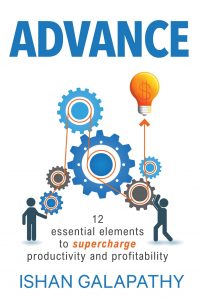
A recent study conducted by the University of Technology Sydney (UTS) on behalf of the Australasian Supply Chain Institute (ASCI) found that during 2018–19, the overall supply chain maturity in Australia dropped by six percentage points from 52 to 46 despite off-the-Richter-scale advancements in technology and automation.
By Ishan Galapathy.
ASCI published ‘The State of the Supply Chain Management Report 2020,’ based on UTS’ research, which measured the maturity of eight supply chain management components of Australian enterprise supply chains—technology and automation was one of the eight components.
The findings pose two questions:
- If we are advancing so much ground with technology and automation, why is the overall maturity of Australian supply chains going backwards?
- And if we are doing more with less effort, have more information and insights about our supply chains, is that not considered maturing?
It’s no surprise that there is a heavy focus on technology. After all, history is in the making with the fourth industrial revolution (Industry 4.0) currently in progress. You may have heard a little about how we landed at Industry 4.0, so here’s the background.
The first industrial revolution occurred with the discovery of steam power in the late 1700s and early 1800s. This led to the mechanisation of factories, increased productivity and reduced costs—the cost of cotton yarn decreased by 90%. The second revolution occurred in the early 1900s when we discovered electricity and the likes of Henry Ford utilised it to mass produce cars via assembly lines. Again, this increased productivity and reduced the cost of manufacturing.
The third revolution, in the 70s and 80s, was the result of advancements in computers and automation and is now superseded by the fourth revolution—Industry 4.0—that is fuelled by advancements in networks (Internet of Things) and connectivity. The promise, yet again, is to increase productivity and reduce costs by managing the entire supply chain from paddock to plate through data acquisition and making decisions in real time—the SMART factory concept.
So, what are we missing?
- Playing catch-up: While we may expect our factories to resemble a Hollywood movie scene (think Minority Report or the TV series CSI Cyber with wall-to-wall 3D holographic digital display units), in reality, most of our machines are still being updated from previous revolutions. We are still not seeing the real Industry 4.0 levels of connectivity within the sector. Updating a case packer or a wrapping machine with a colour touch screen that displays various machine data is not Industry 4.0. It’s progress, yes, but it is actually still an Industry 3.0 project. If it makes you feel better, I’m happy to call it an Industry 3.1 project.
- Putting the cart before the horse: Many businesses implement technological solutions without first trying to understand the strategic problem that requires addressing. We are implementing technology as a solution then looking for the problems it has solved.
- Missing fundamentals: The biggest gap is the lack of fundamental Operational Excellence processes – for example, data to provide useful insights, daily huddles to understand if we are winning or losing, and a process to identify real improvement opportunities. In his bestselling book Atomic Habits, James Clear writes, ‘You do not rise to the level of your goals. You fall to the level of your systems’. I couldn’t agree more.
- Poor problem-solving capability: While we are good at firefighting, we are not so good at structured problem-solving. In most businesses, the CEO is solving the problems that the leadership team should be solving, and the leadership team is solving the problems that the frontline leaders should be solving. Unfortunately, frontline leaders are busy dealing with chaos as they are unable to effectively lead shop floor teams. If we don’t have the capability to deal with basic data, how can we deal with ‘big data’ in the Industry 4.0 world?
Industry 4.0 isn’t an ‘out of box solution’ you can purchase and implement. It is a state of maturity and a way of operating in a connected world. You can’t plug fundamental process gaps with technological solutions. Make them effective first, then leverage technology to make them efficient. How are you advancing the maturity of your supply chain?
 About Ishan Galapathy
About Ishan Galapathy
Ishan Galapathy, author of ‘ADVANCE: 12 Essential Elements to Supercharge Productivity & Profitability’ (Bison Press, $30.00), has a wealth of knowledge in the field of Operational Excellence (OpEx), having worked across six countries for over two decades. Renowned for his simplified techniques, Ishan works with manufacturing businesses to help them move from Chaos to ExcellenceTM. For more information on how Ishan can assist your business visit ishangalapathy.com.





